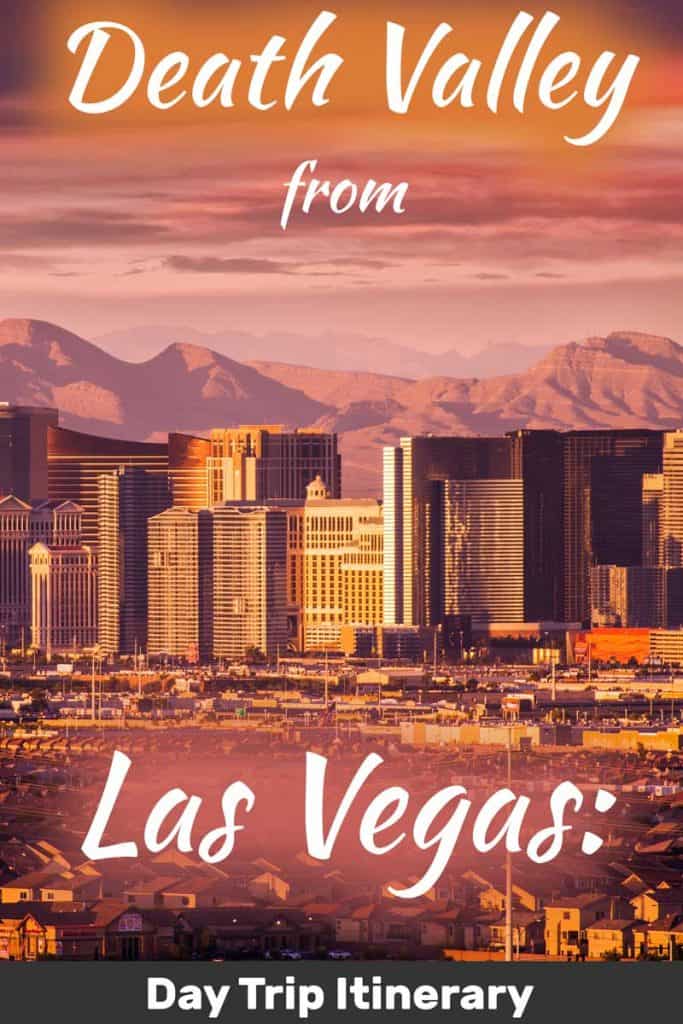Why Should You Visit Death Valley When You are in Las Vegas?
Those that don't mind adding a little extra heat to their Las Vegas vacation may enjoy spending a day seeing the many sights available in Death Valley. Some of the most popular attractions can be visited with a simple day trip from the city, but for those that want to add a little bit more sightseeing may want to try and squeeze in this entire list.
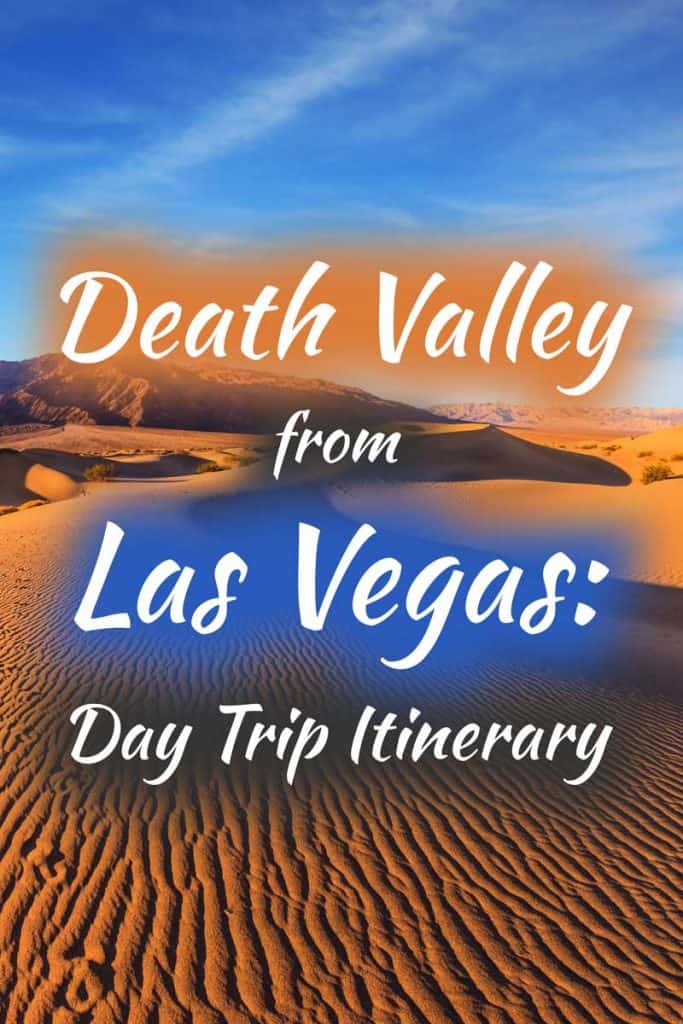 And let's face it, even sworn Vegas fans can get tired of the casinos and fancy hotels. When that happens, you can break your urban vacation and leave Sin City for a well-deserved day in a perfectly calm natural setting.
And let's face it, even sworn Vegas fans can get tired of the casinos and fancy hotels. When that happens, you can break your urban vacation and leave Sin City for a well-deserved day in a perfectly calm natural setting.
There are beautiful natural sights that offer a glimpse of desert terrain that can't be found anywhere else in the United States which makes it a must-see for many Las Vegas visitors. Also, Death Valley is a National Park, which for us, makes it a Bucket List item.
Having said that, you have Zion National Park and Even Bryce National Park, to the east of Vegas. They're definitely worth exploring as well. As we'll focus the rest of the post on Death Valley, now's a good time to mention our very popular post about the best Self-Drive Day Trips from Las Vegas.
Death Valley from Las Vegas: Day Trip Itinerary
This itinerary will give you a good sampling of the Death Valley attractions, and it can be accomplished as a single day trip from Las Vegas. This path will give you a good sampling of the Death Valley sights with just a few hours worth of drive time.
If you want to create your own itinerary, check out the companion post we have about the best things to do in Death Valley National Park.
Let's jump into this single-day itinerary! There's a map as well, following the list of steps!
1. Las Vegas to Mesquite Flat Dunes
The first leg of the journey will take you from your accommodations in the city to Mesquite Flat Dunes with about 2.5 hours worth of driving time. The majority of the trip will be spent on US-95, and you will be traveling roughly 145 miles.
Mesquite Flat Dunes is one of the best-known stopovers in the Death Valley area, and it is generally considered the easiest spot to visit. This area has three different types of sand dunes to enjoy: crescent dunes, linear dunes, and star-shaped dunes. You can also enjoy the Mesquite trees, and you may catch a few glimpses of the local wildlife.
2. Mesquite Flat Dunes to Furnace Creek Visitors Center
The next section of the journey will be taken via CA-190, and it is roughly a 25-minute drive. There are 22 miles between the Dunes and the Visitors Center.
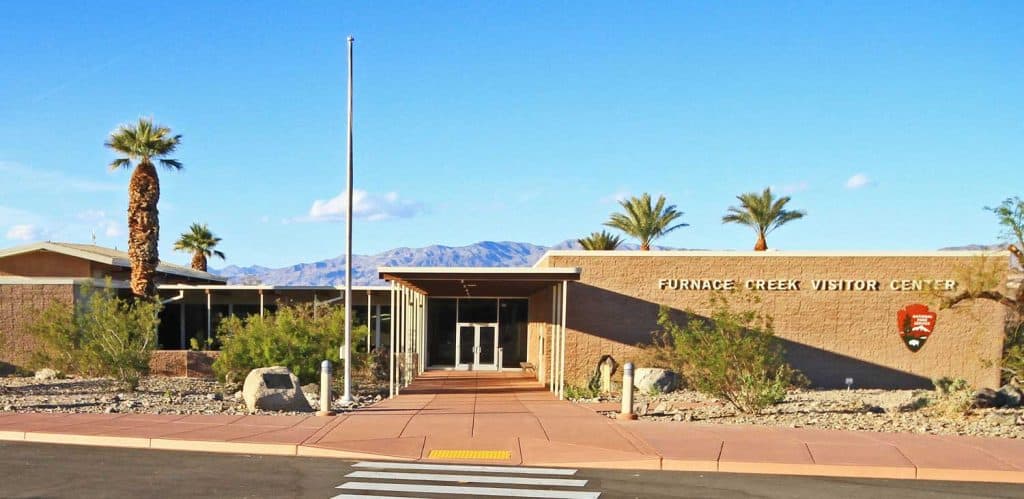
The Furnace Creek Visitors Center is open every day of the week from 8 am to 5 pm, and there is a 20-minute educational film about that park that you can enjoy. In the winter months, you can often find a ranger on site that gives guided walks or informative talks where you can learn more about Death Valley. There is also a book store on-site with plenty of reading materials for you to take home and study up on the history of the park.
3. Furnace Creek Visitor Center to the Devil's Golf Course
After you get your education at the visitor's center, you can head the ten miles down Badwater Road to the Devil's Golf Course. This ride takes about twenty minutes, but you should be aware that the section nearest the Devil's Golf Course is a very bumpy dirt road. If you have a car with lower clearance, you may want to skip this part of the itinerary.
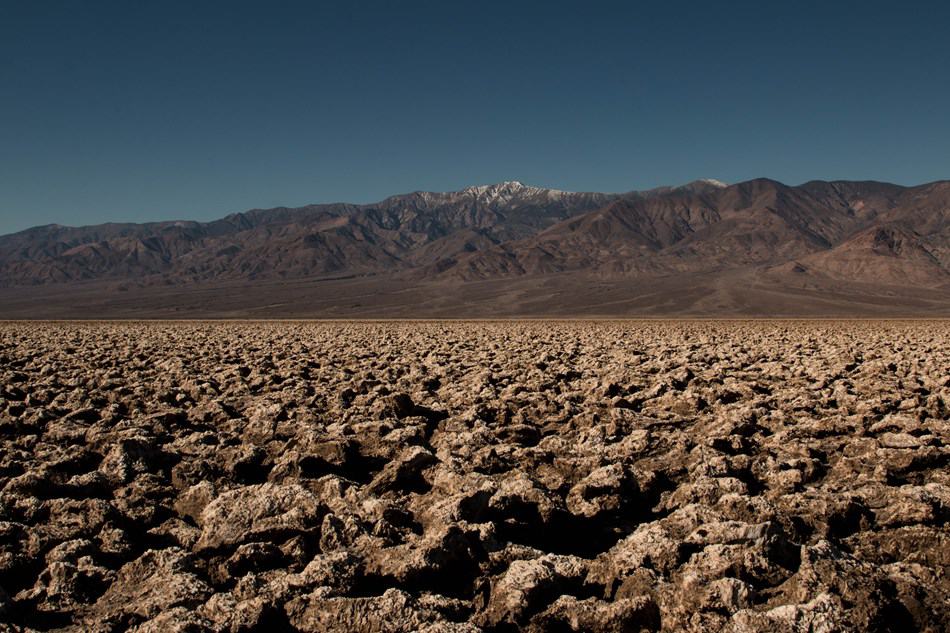
The Devil's Golf Course is a unique site. Spread across an expansive area, there are interesting formations of rock salt that have been eroded by the wind and the rain. There are jagged spires all over the ground, and you can hear little pings and pops if you listen closely. These noises are made when the salt crystals start bursting in the heat. You should be careful when walking around in this area because the formations can crumble underneath your feet.
4. The Devil's Golf Course to Badwater Basin
If you continue down Badwater Road, once you are finished at the Devil's Golf Course, you will reach the Badwater Basin after about 17 minutes worth of driving. The distance between the two is about 10 miles.
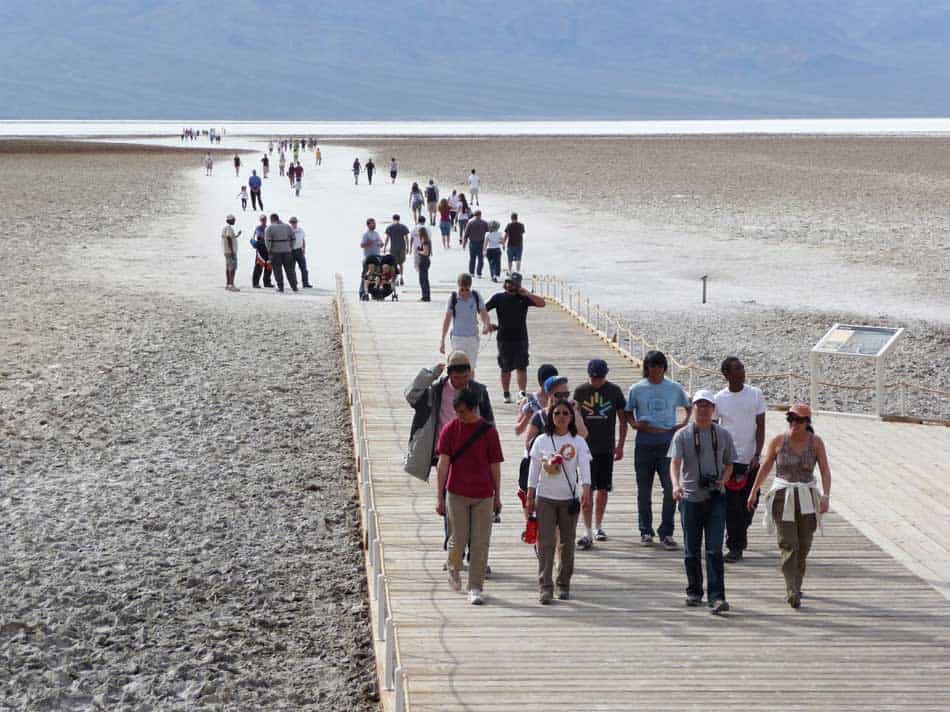
The Badwater Basin is the lowest point in all of California, and it is 282 feet below sea level. The area is flat, arid, and very beautiful. The salt flats stretch out for quite a distance, and at certain times of the year, there is a salt pool as well.
5. Badwater Basin to Zabriskie Point
After the salt flats, you will continue your trip down Badwater Road. Zabriskie Point is about 17 miles from the Basin, and it takes a little over 20 minutes to get there.
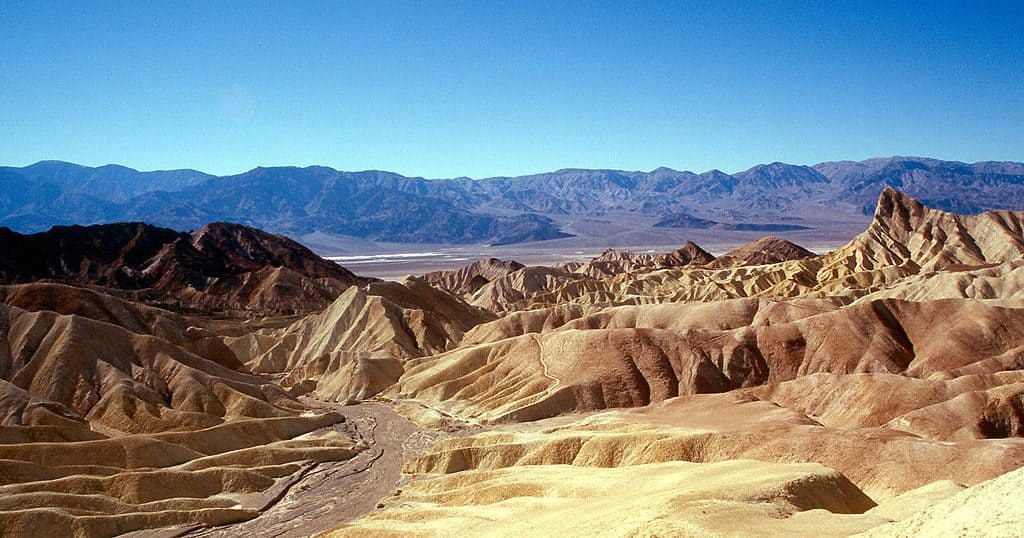
Zabriskie Point gives you an excellent spot for photo opportunities as the views are quite stunning from this location. You will be overlooking the upper eastern portion of the Badlands, and if you arrive in the morning hours, you will have the perfect light for taking gorgeous photos. Walk up the paved hill to catch a glimpse of canyons and gulches as well as the raw desert beauty of the area.
6. Zabriskie Point to Dante's View
The last stop in your Death Valley tour is Dante's View which is about 20 miles from Zabriskie Point and takes about 40 minutes to traverse. You will be arriving via Dante's View Road, which contains a number of tight turns and narrow lanes. Drivers should stay alert and maintain a safe speed up the mountain.
The view from Dante's Point may look very familiar for Star Wars fans as the area was used in the filming of Star Wars: a New Hope. Photographers consider this the best spot for taking photos in Death Valley as you are 5,475 feet up, and you have panoramic views from your perch in the Black Mountains.
7. Dante's View to Las Vegas
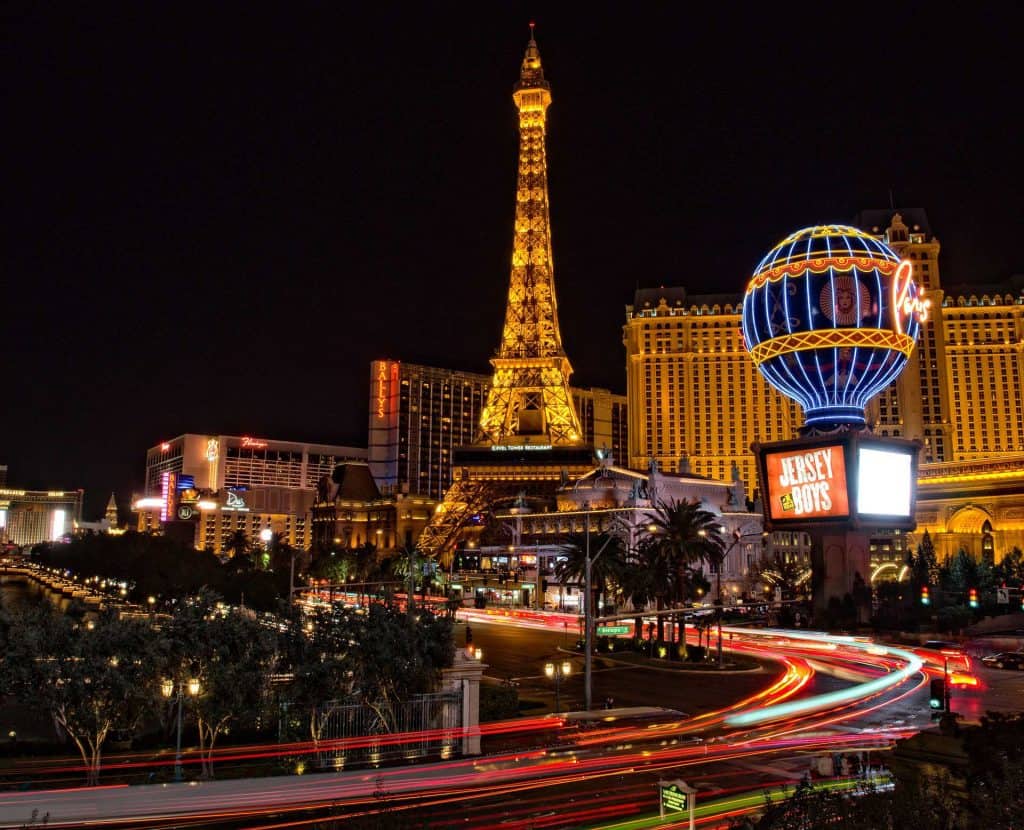
Now that you've seen a good portion of the Death Valley sites, it is time to head back to Las Vegas. The ride back is mostly on US-95, and it takes about 2.5 hours. In total, the return portion of the trip consists of 140 miles.
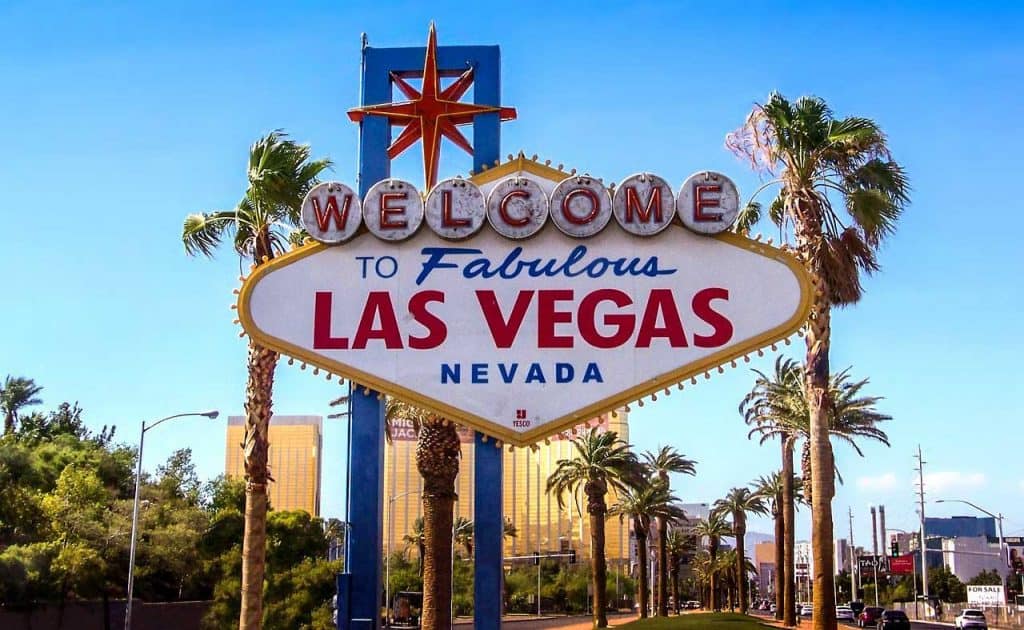
Finally, here's the map of everything we've described above -
Las Vegas to Death Valley Tours
If you don't have a car with you in Las Vegas, but you really want to take a trip to Death Valley, you can opt for a guided day tour with one of the many outfitters in the city.
A very popular tour option that tends to stand out from the rest is the Pink Adventure Tours, or as they are commonly called the pink jeep tours. These tours run seasonally from September until May, and you can expect to see all of the most popular Death Valley sights with a professional guide. A picnic lunch and bottles of water are included in your tour price.
Another small group tour that is highly rated is run by Adventure Photo Tours. Guests on this tour can expect to be picked up from their hotel, and the tours are run by professional guides that know a lot about the history and the geology of this unique area. Lunch and snacks are also included in this tour.
Detours of Nevada offers a full-day tour upon a properly air-conditioned motorcoach. All of the highlights are visited including Badwater Basin and Zabriskie Point. The tour guides are happy to help explain the landscape, the wildlife, and the history of the area. Lunch, bottled water, and snacks are included in the tour price.
Can you get from Las Vegas to Death Valley by bus?
If you do not have a car and don't want to do a tour, you may be seeking public transportation as a way to see all the sights of Death Valley. However, there aren't any public transportation options that will take you to the park.
There is, however, a bus that can take you out to Death Valley, but you won't have a vehicle to maneuver the park afterward. This will be a drop off service only. The Bundu Bus runs from Las Vegas to Yosemite, and it can be used to hitch a ride to Death Valley a couple of times per week.
This Bundu Bus follows a strict path through the desert area, and it does make a few stops so that riders can take photographs. These buses have hop-on/hop-off services, and while this feature can be used to get to Death Valley, some restrictions apply.
You can learn more about the process on their website.
The Shortest Route to Death Valley
When choosing your own Death Valley itinerary, you should take into account the time of day you are traveling, your time constraints, and the sights you most want to see. With that being said, this is the shortest route you can take from Las Vegas to Death Valley:
- From your accommodations, you will want to get on I-515/US-93 N/US-95 N for nearly a mile until you come to NV-160 W.
- Stay on NV-160 W for 66.5 miles
- NV-160 will turn into Bell Vista Ave, and you will want to head toward Inyo County. Travel on this road for about 25 miles.
- Next, you will take CA-190 all the way to Airport Road which will get you to the Furnace Creek Visitor Center which is about 30 miles away from the previous turn.
The Most Scenic Route to Death Valley
If speed is not a necessity, then you will probably want to take the most scenic route possible. This route only adds about 40 miles over the shortest route, but the photographs that you will take will make up for the lost time.
- Take CA-178 for 91 miles to Badwater Road
- You will drive on Badwater Road for 70 miles until you reach CA-190
- Turn onto CA-190, and drive for about two miles until you reach the Furnace Creek Visitor Center.
When Should You Visit Death Valley
All seasons in Death Valley have their merit. Spring is when you can enjoy the wildflowers, summer is a good time for hiking with fewer crowds, fall has fewer crowds, and winter has cooler, more bearable temperatures.
However, most people like to visit in the spring months because the weather is the easiest to manage. Later in the year, the summer heat can become unbearable for many people.
For a comparison of the temperatures in Las Vegas and Death Valley, you can use these seasonal guidelines:
The spring months in Las Vegas range from a low of 49 degrees in March to a high of 89 degrees in May. Those same months in Death Valley range from 55-101 degrees.
In the summer months, things really heat up in Death Valley. Visitors may find a high of 117 degrees in July, the hottest month. Yet the temps can be down in the low 70s in May. The spring temperature range in Las Vegas was a low of 49 degrees and a high of 104 degrees.
In fall the weather starts to cool off. Las Vegas has temperatures that range from a high of 94 degrees in September to a low of 47 degrees in November. Fall in Death Valley ranges from a low of 48 degrees to a high of 107 in September.
Winter will cool things off substantially. The lowest temperature in the winter months is 38 degrees in Death Valley and 39 degrees in Las Vegas. The highs in the winter months range from 57-63 in Vegas and Death Valley. While the lows in winter tend to be around 38 degrees in Death Valley and 39 in the city.
Go out and Explore!
We hope you found this guide helpful! There's nothing stopping you now from visiting Death Valley from Las Vegas - other than the heat, of course!
Have you ever taken a day trip to Death Valley National Park from Vegas? We'd love to hear about that, so please leave us a comment here!
